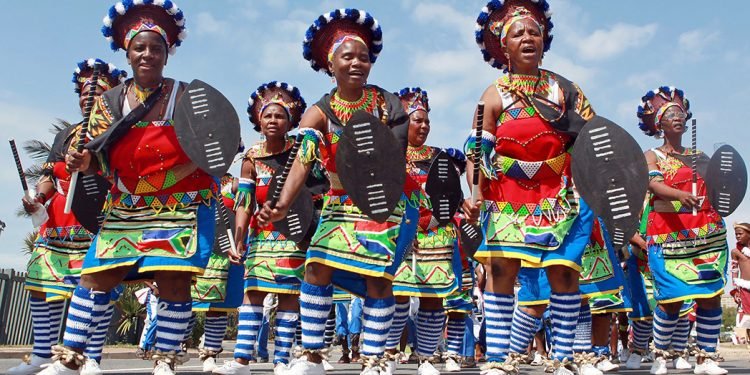Source: Africa Publicity
In the quiet village of Osun, tucked within the dense forests of southwestern Nigeria, Amina stood by the riverbank, watching the gentle flow of the Osun River. The river had always been a source of life for her people, but it was more than just water to them—it was sacred, a place where the goddess Osun, a deity of fertility and prosperity, was believed to reside. Every year, pilgrims from all over the world visited the village to participate in the Osun-Osogbo Festival, a celebration of the goddess that had been passed down through generations.
Amina had grown up with these traditions, but as she matured, she began to see the potential for something more. With the world’s increasing interest in authentic cultural experiences, she believed that her village’s rich heritage could become a cornerstone of sustainable tourism. But it wasn’t just about the festival; Amina envisioned a broader initiative that would celebrate African culture across the continent, drawing visitors to the diverse and vibrant traditions that had been preserved through centuries.
One day, Amina shared her vision with the village elders, who had always been the custodians of their traditions. The eldest among them, Baba Adewale, listened intently as she spoke. He was a man of wisdom, with deep-set eyes that had witnessed decades of change. He had always been wary of outsiders, fearing they might erode the values that had kept the community strong. But Amina’s passion was infectious.
“Tourism can bring prosperity,” she explained, “but it must be managed carefully. We must ensure that our culture is not commodified, but rather, celebrated and respected. We can create a model where visitors come not just to observe, but to learn and engage, to understand the true essence of our traditions.”
Baba Adewale nodded thoughtfully. “This will require the cooperation of many,” he said, “not just within our village, but across regions. Africa is vast, and our cultures are diverse. If we are to harness this potential, we must work together.”
Amina’s idea soon spread beyond Osun. She connected with cultural leaders from across Africa, from the Maasai of Kenya to the Berbers of Morocco, the Zulu of South Africa to the Tuaregs of Mali. Each group had its own unique customs and traditions, yet they all shared a common thread—a deep connection to their heritage and a desire to preserve it.
In Kenya, Amina met with Mwangi, a young Maasai warrior who was passionate about his people’s traditions. The Maasai were known for their distinctive customs, colorful attire, and traditional dances. Tourists often visited Maasai villages, but the experiences were often superficial, reducing their rich culture to mere entertainment. Mwangi was eager to change that.
“Tourism should be about education,” Mwangi said as they walked through the plains of the Maasai Mara. “We can teach visitors about our way of life, our relationship with the land, and our role as guardians of the wildlife here. But we must also benefit from it, ensuring that the income generated supports our community and our traditions.”
Together, Amina and Mwangi developed a plan for cultural immersion experiences, where visitors would spend several days living among the Maasai, learning their ways and participating in their daily activities. This would not only provide a deeper understanding of Maasai culture but also create a sustainable source of income for the community.
In Morocco, Amina traveled to the ancient city of Fez, where she met Fatima, a Berber woman who was a skilled artisan. The Berbers, indigenous to North Africa, were known for their intricate crafts, including weaving, pottery, and jewelry making. Fatima’s workshop was filled with colorful rugs and beautifully crafted ceramics, each piece telling a story of Berber history and tradition.
“Many tourists come to Morocco for the deserts and the cities,” Fatima explained, “but few understand the depth of our culture. Our crafts are more than just souvenirs—they are a part of our identity. If we can share the stories behind them, we can offer something truly unique.”
Amina saw the potential in Fatima’s words. They worked together to create cultural tours that would take visitors beyond the typical tourist sites, offering them a chance to explore the Berber villages in the Atlas Mountains, meet the artisans, and learn about their craft-making processes. This initiative not only provided a more meaningful experience for tourists but also helped preserve the traditional arts that were at risk of being lost in the face of modernization.
In South Africa, Amina connected with Sipho, a Zulu cultural historian. The Zulu people had a proud history, and their traditions were celebrated through music, dance, and oral storytelling. Sipho was concerned that modern influences were diluting these traditions, especially among the younger generation.
“We need to make our heritage relevant,” Sipho said as they stood in the heart of KwaZulu-Natal, overlooking the rolling hills where the Zulu kingdom had once thrived. “If we can integrate our culture into the tourism industry in a way that respects and honors it, we can ensure that it lives on.”
Amina and Sipho developed a series of cultural festivals that would take place throughout the year, each focusing on different aspects of Zulu heritage. These festivals would not only attract tourists but also engage local communities, especially the youth, in the preservation of their traditions. The festivals became a platform for Zulu musicians, dancers, and storytellers to showcase their talents, while also educating visitors about the significance of their culture.
In Mali, Amina met with Ahmed, a Tuareg guide who led expeditions across the Sahara Desert. The Tuaregs, known as the “Blue People” because of their indigo-dyed clothing, were nomadic herders with a deep knowledge of the desert landscape. However, the harsh conditions and political instability in the region had made it difficult for them to sustain their traditional way of life.
“Tourism could be a lifeline for us,” Ahmed said as they rode camels across the golden dunes. “But it must be done in a way that respects our traditions and the fragility of the desert. We can offer something unique—an experience of the Sahara that is both authentic and sustainable.”
Amina worked with Ahmed to design eco-friendly desert tours that would allow visitors to experience the Tuareg way of life while minimizing their impact on the environment. These tours would include guided treks, storytelling around campfires, and lessons in Tuareg survival skills, providing a deeper understanding of the culture and the challenges faced by the Tuareg people.
As Amina traveled across the continent, her vision began to take shape. She realized that the key to harnessing Africa’s cultural heritage for tourism growth lay in collaboration. By bringing together diverse communities, each with its own unique traditions, they could create a network of cultural experiences that would attract visitors from around the world.
But Amina also knew that this growth had to be managed carefully. It was essential to strike a balance between preserving cultural heritage and meeting the demands of the modern tourism industry. She advocated for community-led tourism initiatives, where the local people had control over how their culture was presented and shared. This would ensure that tourism development benefited the communities directly, providing them with the resources needed to preserve their traditions for future generations.
The success of these initiatives began to draw attention. Governments, NGOs, and private investors took notice, seeing the potential for cultural tourism to contribute to economic growth while also promoting cultural preservation. Amina’s efforts led to the establishment of the African Cultural Heritage Tourism Alliance, an organization that brought together cultural leaders, tourism experts, and policymakers from across the continent to collaborate on sustainable tourism development.
Through this alliance, Africa’s rich cultural heritage was celebrated and shared with the world, not as a commodity to be exploited, but as a living tradition that connected people across time and space. Tourists who visited Africa left with more than just memories—they gained a deeper understanding of the continent’s diverse cultures and the people who kept them alive.
And for Amina, the journey was just beginning. As she stood once again by the Osun River, watching the sun set over the water, she knew that the true value of Africa’s cultural heritage lay not just in its ability to attract visitors, but in its power to unite and inspire.








